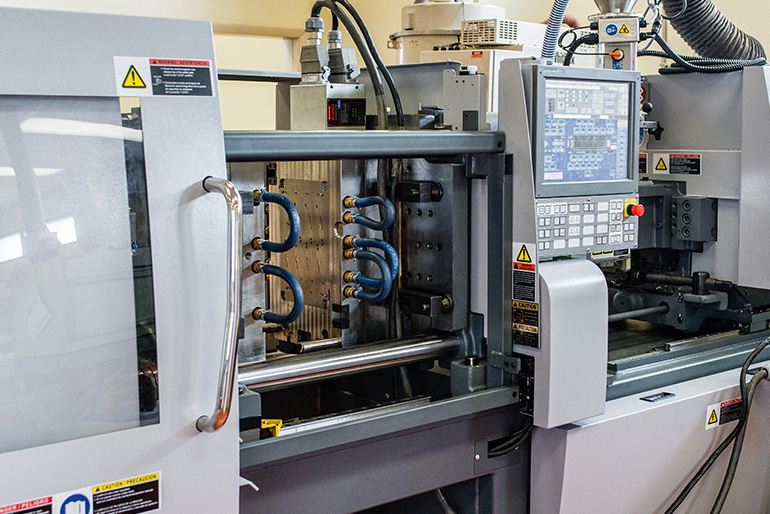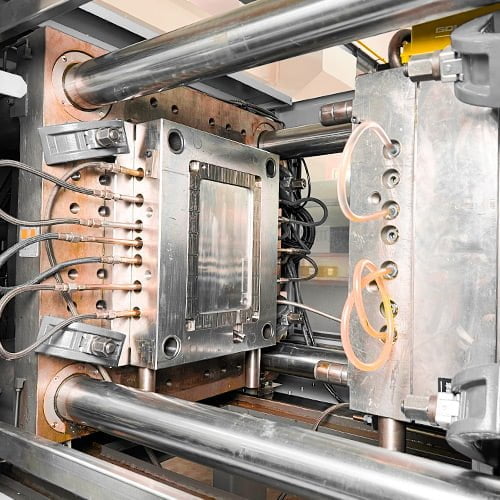Comprehending the Fundamentals of Plastic Shot Molding Procedures
Plastic injection molding offers as a keystone of modern-day production, supplying a systematic technique to creating complicated elements with precision. Checking out these vital elements can reveal exactly how even minor modifications can lead to considerable renovations in manufacturing results, increasing questions about the possibility for technology in this well established procedure.
What Is Plastic Injection Molding?
Plastic shot molding is a commonly used production process that changes thermosetting and thermoplastic products into specific and intricate shapes. This method is favored for its capability to produce high quantities of identical get rid of outstanding accuracy, making it an indispensable approach in various markets, including auto, consumer items, and clinical devices.
The process entails thawing the chosen plastic product and injecting it right into a mold and mildew under high pressure. The mold, created to the specs of the desired component, permits the liquified plastic to materialize as it strengthens and cools down. As soon as the product has solidified, the mold and mildew is opened, and the ended up element is expelled.
Plastic shot molding provides several advantages, consisting of reduced waste, consistency in manufacturing, and the capacity to include intricate styles that might be challenging with other producing methods. Furthermore, it sustains a wide variety of materials, each giving unique residential properties that can be tailored for details applications. As industries continue to innovate, plastic injection molding stays at the leading edge, making it possible for the growth of sophisticated items that satisfy progressing customer needs.
The Injection Molding Process
The injection molding procedure is an innovative strategy that entails numerous crucial phases to create premium plastic elements. Originally, plastic pellets are fed right into a warmed barrel where they are thawed right into a thick fluid. This molten plastic is after that injected under high pressure right into a precision-engineered mold and mildew, which shapes the product right into the desired kind.
When the mold is filled, the plastic is permitted to strengthen and cool, taking the shape of the mold tooth cavity. Cooling time is essential, as it affects the cycle time and the last properties of the shaped part. After enough air conditioning, the mold opens, and the completed component is expelled making use of ejector pins.

Materials Utilized in Injection Molding
Different materials can be made use of in the injection molding process, each offering unique buildings that satisfy specific applications. The most commonly utilized materials include thermoplastics, thermosetting plastics, and elastomers.

Thermosetting plastics, like epoxy and phenolic resins, undertake a chemical change throughout the healing procedure, causing a stiff, stringent structure. These products are ideal for applications calling for high heat resistance and architectural stability, often made use of in auto components and electrical insulators.
Elastomers, consisting of silicone and rubber-based products, offer flexibility and resilience. Their distinct properties make them appropriate for applications that demand elasticity, such as seals and gaskets.
In addition, specialty materials like bio-based plastics and compounds are obtaining traction for their environmental advantages and boosted performance qualities, widening the scope of injection molding applications in different markets. Comprehending the properties of these products is critical for selecting the ideal type for particular jobs.
Benefits of Shot Molding
Shot molding attracts attention as a highly efficient manufacturing process that use this link provides many advantages for generating complex parts with precision. One of the most substantial advantages is the capacity to develop detailed styles that would certainly be difficult or difficult to attain with other techniques (Plastic Injection Molding). The process permits tight tolerances and comprehensive functions, guaranteeing top notch parts
Furthermore, injection molding is known for its quick manufacturing capacities, making it an ideal selection for high-volume production. As soon as the mold and mildew is produced, components can be produced rapidly, minimizing preparations and increasing total performance. This effectiveness not only decreases manufacturing expenses yet likewise gives an one-upmanship in the market.
The convenience of products utilized in injection molding additionally enhances its charm. A large variety of thermoplastics and thermosetting polymers can be used, enabling manufacturers to choose materials that ideal meet their certain requirements, including strength, warmth, and flexibility resistance.
Additionally, the process lessens waste, as excess product can typically be recycled and reused. This sustainability aspect adds to a decreased environmental effect, making shot molding a responsible manufacturing selection. In general, the benefits of shot molding make it a recommended method for several industries.
Aspects Influencing Product Top Quality
While numerous elements can influence product top quality in injection molding, understanding these aspects is crucial for attaining ideal outcomes. Secret elements consist of product selection, processing parameters, and mold design.
Material selection plays a crucial duty, as different polymers show distinct residential or commercial properties that influence flowability, toughness, and thermal security. Poor material option can bring about issues such as bending or insufficient dental filling.
Handling criteria, consisting of temperature level, cycle, and stress time, should be thoroughly controlled. Variants in these settings can lead to variances in component measurements and surface finish. For example, exceedingly high temperature levels may cause deterioration of the polymer, while inadequate stress can cause short shots.
Mold and mildew layout is equally essential, as it figures out the flow of the molten plastic and the cooling process. Poorly made mold and mildews might result in unequal air conditioning rates, resulting in dimensional inaccuracies and recurring stress and anxieties.

Final Thought
Finally, plastic shot molding acts as a vital manufacturing procedure that allows the reliable manufacturing of premium parts. Mastery of the injection molding procedure, including the understanding of materials and the impact of numerous elements on product top quality, is necessary for attaining optimum outcomes. The advantages of this technique, such as cost-effectiveness and style flexibility, additional underscore its significance across numerous markets, solidifying its condition as a preferred choice for high-volume production.
Plastic injection molding serves as a keystone of modern-day production, giving a methodical method to producing intricate elements with precision.Plastic shot molding provides several benefits, consisting of reduced waste, consistency in manufacturing, and the ability to integrate elaborate link designs that might be testing with other producing approaches (Plastic Injection Molding). As industries proceed to innovate, plastic injection molding stays at the center, making it possible for the development of innovative products that meet advancing customer demands
The injection molding procedure is Full Report a sophisticated method that entails a number of key stages to produce premium plastic components.In final thought, plastic injection molding serves as a crucial production process that makes it possible for the effective manufacturing of high-quality elements.